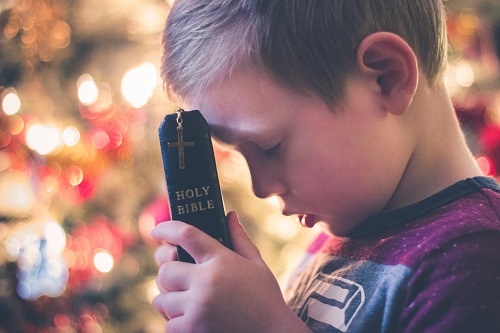Many adults are struggling to read the Bible. We know this. At some level it’s understandable because the Bible is a big, complicated, and very ancient book. Yet the Bible is where Christianity gets its story, so the faith community needs to be deeply committed to knowing it well regardless of the challenges.
If adults are struggling, what should we expect from kids? If the Bible is tough going for the grownups, it’s going to be even tougher for young readers, right?
In a word . . . yes. But maybe it’s time to look at how we’ve been trying to introduce kids to the Bible. What, exactly, has been our goal? What’s the right expectation for kids reading, knowing, and understanding the Bible? And what would the path to solid Bible fluency look like for kids?

Where We’ve Been
Simply from looking at our standard Bible curricula, it would seem that what’s actually happening is that we have other goals besides fluency (spiritual formation, teaching morals, building faith, etc.) that cause us to use the Bible in certain ways. The intended purpose is not often to foster a deep engagement with Scripture itself. As a result, within any given lesson the Bible is encountered merely as either a theme verse or two, or a safely paraphrased version of a “Bible story.”
Perhaps this approach is seen as a good and necessary adaptation of the Bible for readers who are young and not yet proficient. That makes sense, right? Well. . .
The problem with giving children only a verse or two is that this approach tends to stick around as readers get older. Even into adulthood we continue to show and teach the Scriptures by referring to select Bible verses. The consequence of this is that many people persist in thinking the Bible is in fact a collection of these verses (and if they are honest, admitting that some verses are better than others).

And the problem with an ongoing diet of paraphrased Bible stories is that such narrations are not actually the Bible. They are typically told with any age-inappropriate elements toned down or taken out. And of course, any paraphrase represents someone’s interpretation of the essence of a particular story.
All of this is appropriate in a sense, but there’s also a danger here. Many of these “safe” versions of the stories are never replaced with the actual biblical texts as kids turn into teenagers and then young adults. This means that young readers often wind up not learning the way biblical language actually sounds and actually works. And older kids never learn to engage with the stronger, stranger, more complex versions of these stories that the Bible actually tells.

When do we get around to teaching young adults how to handle the real Bible?
Furthermore, these collections of paraphrased stories are often treated as stand-alone lessons, so kids don’t ever learn how the stories are connected and how they build on each other to tell the bigger biblical narrative. And rarely are different kinds of literary writings acknowledged. A curriculum constructed of “Bible stories” will naturally have difficulty incorporating letters, songs, wisdom sayings, and other literary varieties in Scripture.
So are we discipling kids into not being Bible readers?

What would the average child take away from their long-term experience with the Bible in our current teaching approach? Have they taken the first steps toward receiving the Bible on its own terms? Or have they been taught to use the Bible in simplistic and misleading ways?
I’m reminded of a conversation we had with a prominent publisher of children’s Sunday School resources and Bible curricula. After reviewing their programs and comparing them with our perspective on Bible engagement, one of their executives, deep in thought, looked up and said, “So you’re telling me that if our programs are successful, we are actually producing generations of non–Bible readers.”
Are kids growing up learning that the Bible is a book to be read? Do kids have any inkling of the big story? Are they falling in love with Jesus—that is, with Jesus as understood in the context of the overall narrative?

What To Do?
At the Institute for Bible Reading, we’re working on answers to these reading problems. As young people within the church grow up, graduate, and head out on their own in various ways, a healthy and hearty appetite for Bible reading doesn’t seem to be going with them. It shouldn’t be a surprise, then, that there is a low number of adults in the church who are engaged in Bible reading and comprehension. People are following the path that’s been laid out for them, and then we scramble to convert adults into Bible readers. We are failing to show them the way in the first place.
So what would change look like?

The downward trajectory of Bible engagement in the church needs to be reversed if we are to fully receive the profound gift that we have in God’s Word. A Bibleless Christianity won’t be a vibrant and affective Christianity.
Let’s chart a course for a new future for kids and the Bible, so that kids know the Bible the right way at the right age and stage, and appropriately grow into the Bible. We want kids who not only love the Bible but also learn how to read it intelligently and well, so they don’t turn away from it the first time they encounter its opponents.
Read more about Bible engagement from the Institute for Bible Reading
Learn more about Immerse: The Bible Reading Experience
Hear what happens when a group of high school students read the New Testament


This was such a great article! As a child I grew up in an environment like this. It affects me so much that when I read through chapters now as an adult I am almost looking only for those verses I am familiar with as a child. I end up missing verses I never really paid any attention to. Now it is my challenge to help direct my kids so they will develop a sincere desire to read the Bible verses in their entirety and not just the highlights!
Well said! Daily Bible reading at home as a family for us provides a wonderful way to learn the Bible and discuss it in a way that is relevant for our lives. We really need to strongly encourage this practice in every Christian home!
I love this idea must also fear the LORD keep his commands, put them in prayers
How can a NLT Bible for my Son?
NLT is available from Amazon and most other retailers where you purchase Bibles
I am really interested in following up with what the Institute for Bible Reading would develop for kids and their guardians, that would guide and ultimately make Bible readers out of our kids.
Keep me posted.
This is wonderful!! I know they would love to hear from you. You can contact them here: https://instituteforbiblereading.org/contact/
I think that it is very important to teach children and adults on how to read the Bible and interpret it where they understand it so that they can apply it. Even thos that are mentally challenged. Children are more visual, so some skits or plays or role play of the Bible some hands on illustrations. Also adults more in depth Bible classes